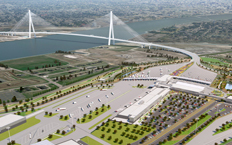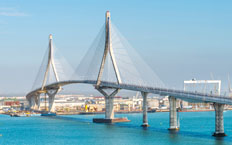DRAGADOS is a worldwide leader in bridge construction. Our projects are recognized by their sheer size, technical intricacy, use of the latest technologies, and innovative ideas for meeting and overcoming technical challenges.

We have constructed more than 1,500 bridges of all types and sizes, including:
- Cable-stayed bridges
- Highway bridges
- Major interchanges
- High speed rail bridges
- Aqueducts
DRAGADOS, with 70-year corporate experience, provides a wealth of knowledge and expertise for the development of new and innovative ideas for our projects. Our engineers have worked with world renowned architects and engineers in the design and construction of some of the most complex signature bridges constructed by DRAGADOS. Some of our bridges are the best known signature bridges in the world.




